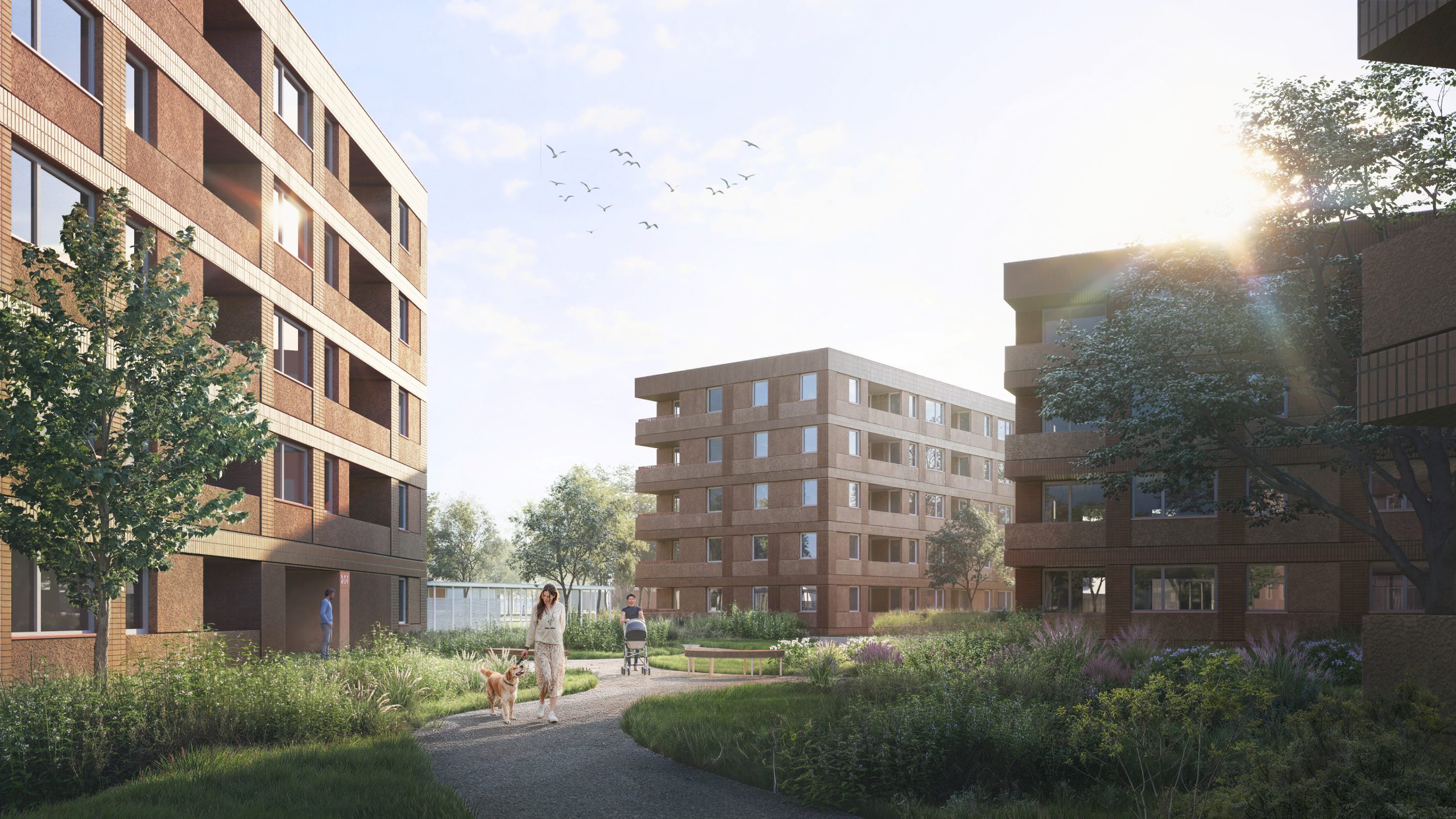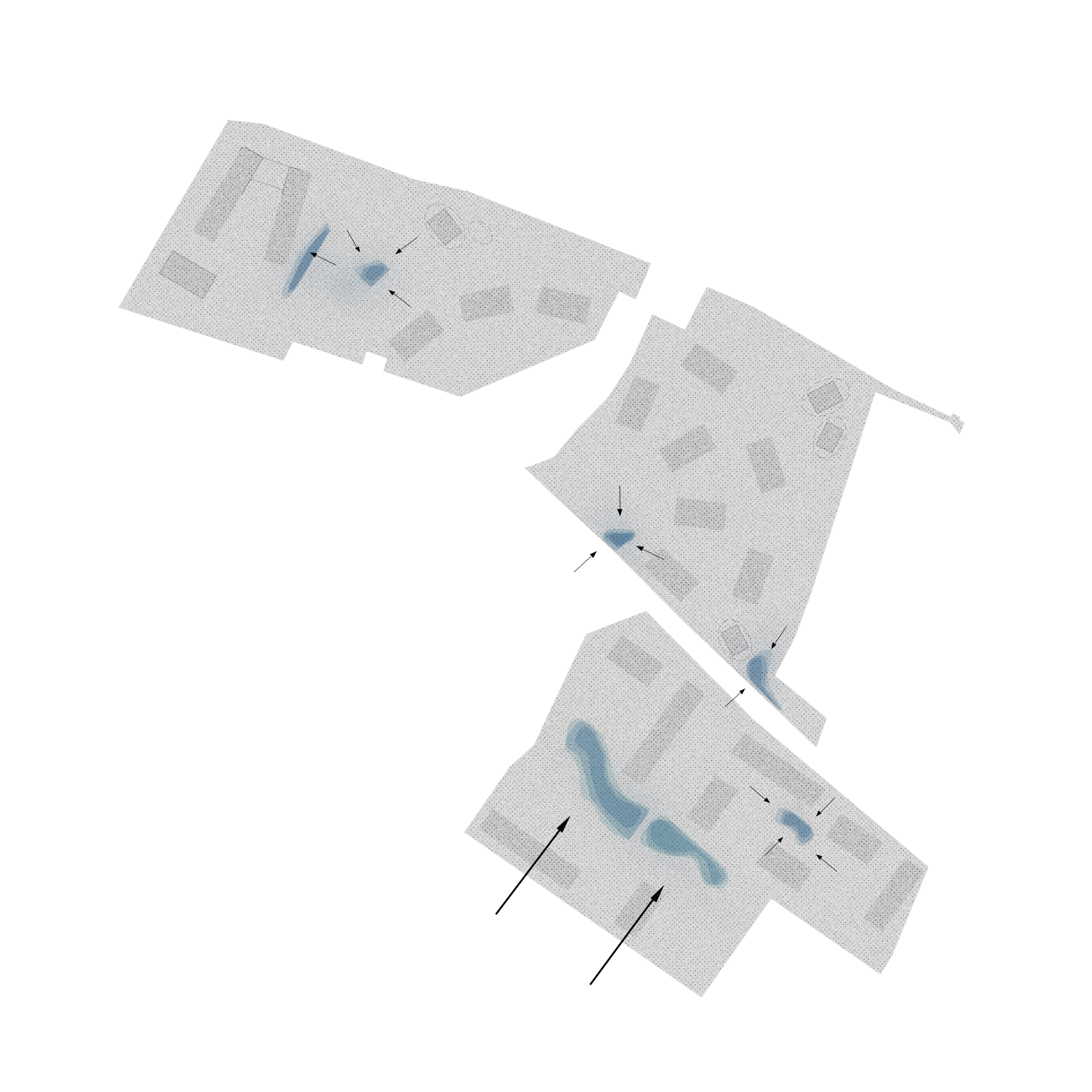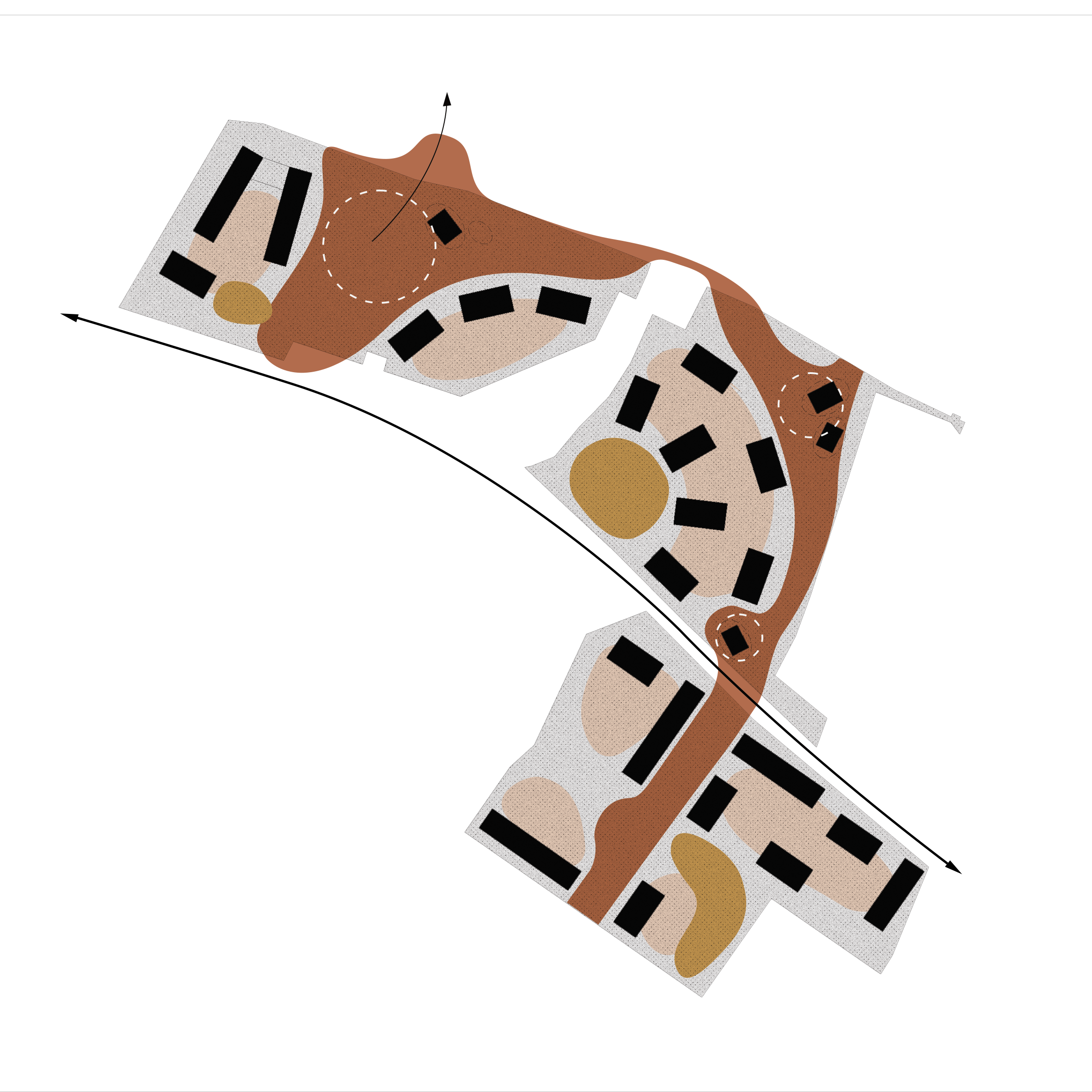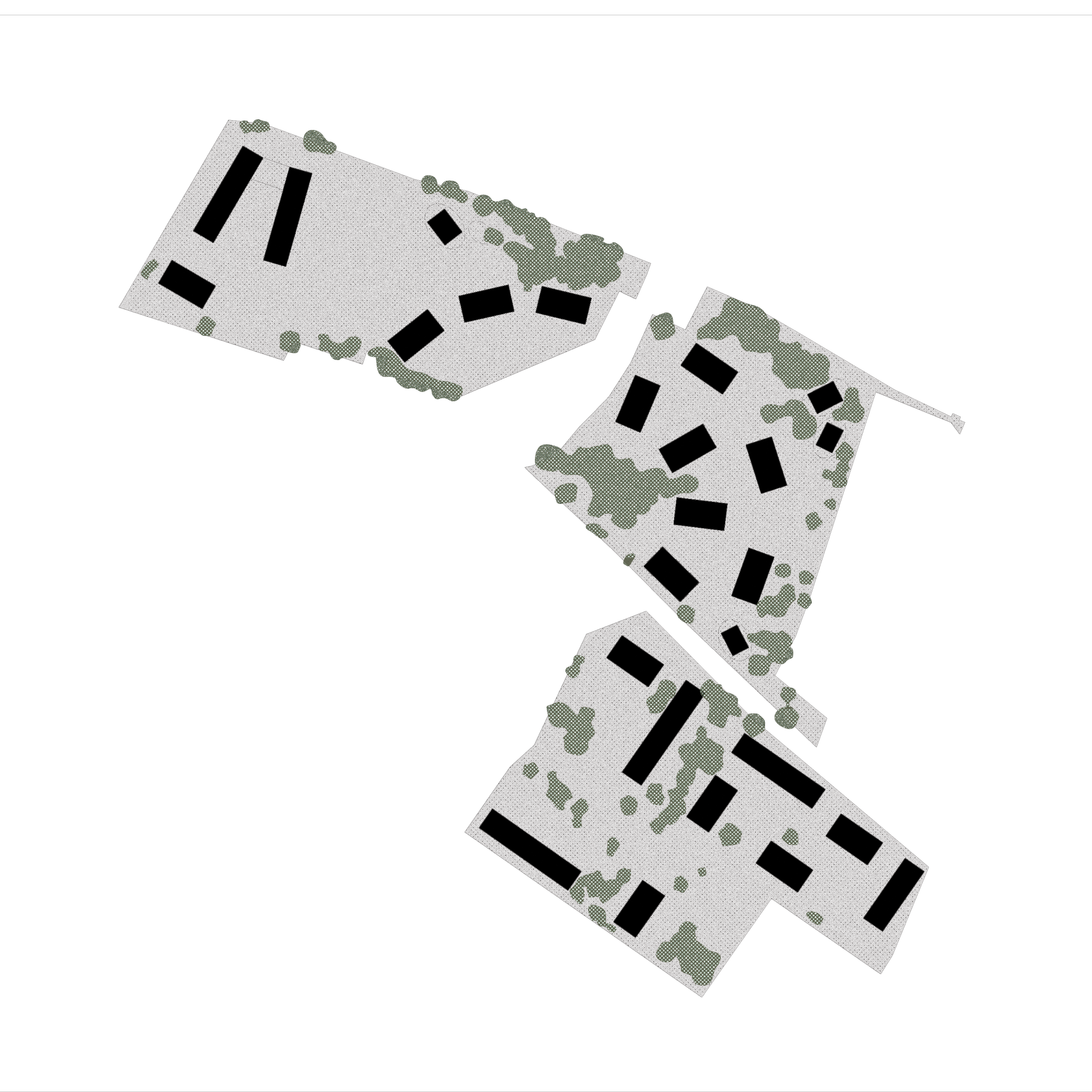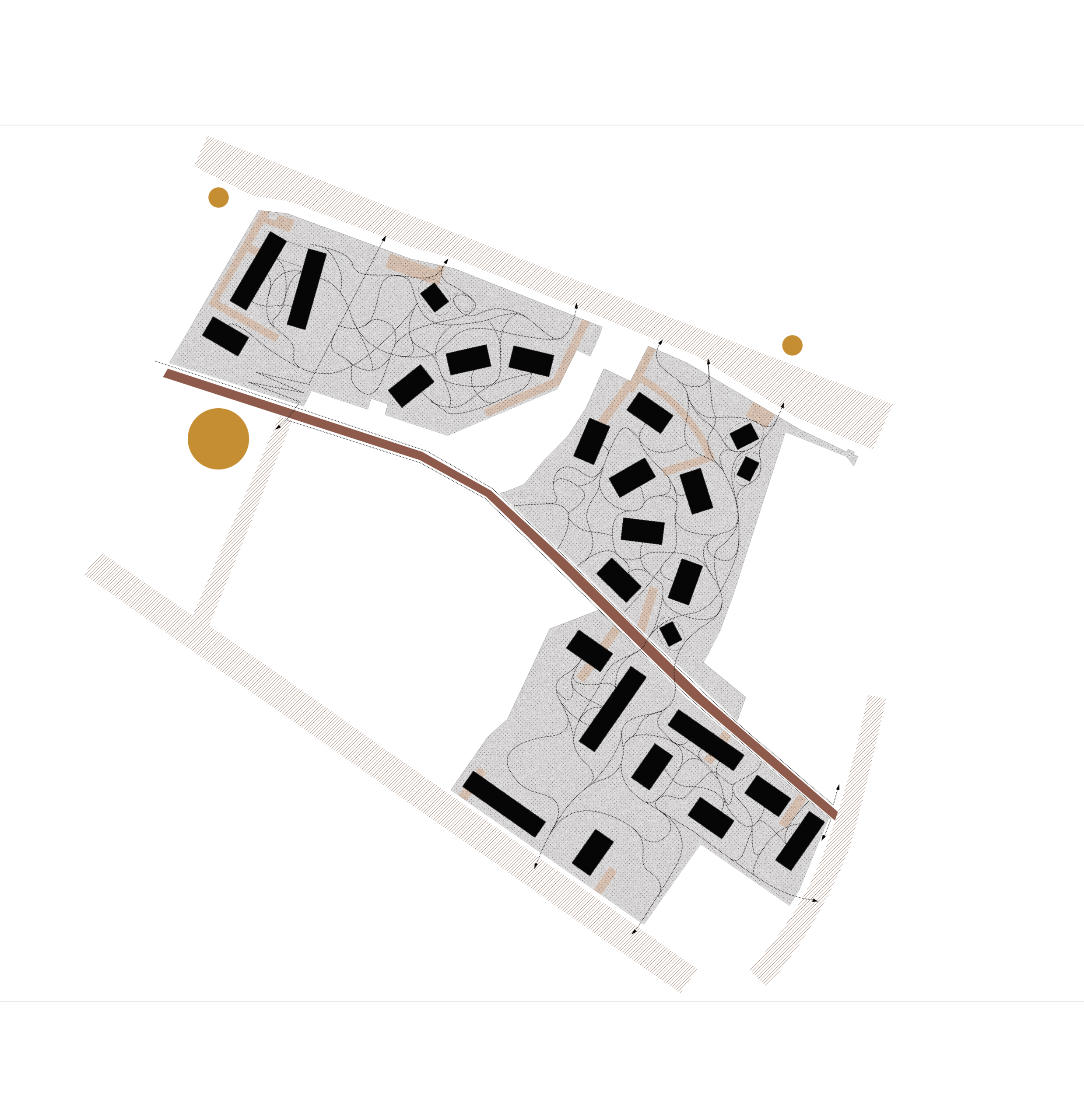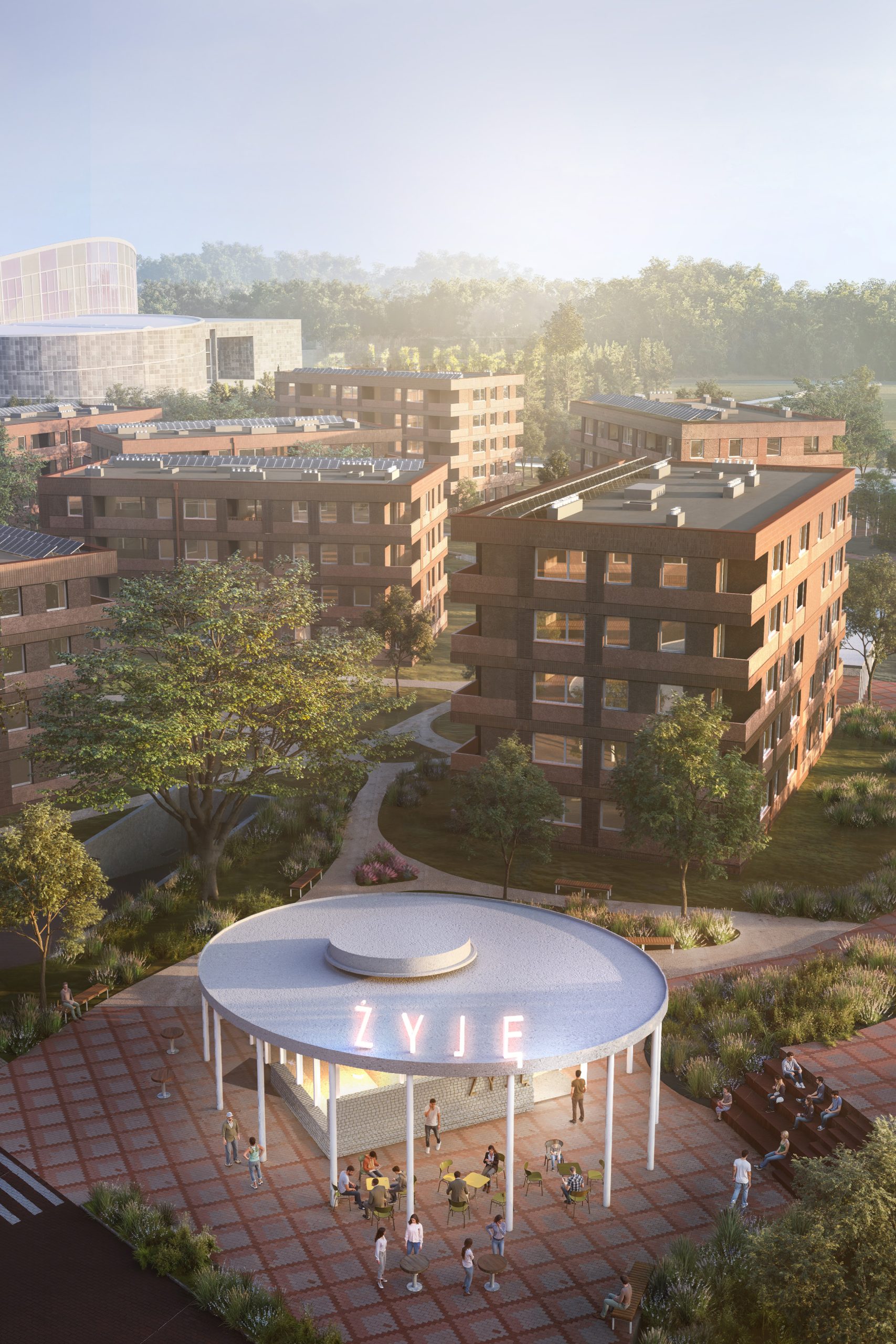
TBS GLIWICE PSZCZYŃSKA
Distinction in the competition for the development of an urban and architectural concept of a multi-family residential complex at Pszczyńska and Kujawska Streets in Gliwice.
Project team: Maciej Taczalski, Karolina Taczalska, Mateusz Cyganek, Paulina Jaklewicz, Marta Golec, Jakub Ławski, Anna Jaruga-Rozdolska, Marta Szafnicka
Visualizations: Artur Piórek
Mural design: Zuzanna Milewska
The distinction was awarded for an interesting spatial creation based on the post-war cultural tradition of Gliwice. The scale and atmosphere of the development, referring to the existing historical buildings along Pszczyńska Street, were considered noteworthy.
The design of the TBS Gliwice housing development envisioned the creation of a neighborhood organized around a narrative axis leading the user through a symbolic journey from the past toward the future. At the center of the composition is a mural inspired by an anecdote about Tadeusz Różewicz – an honorary citizen of Gliwice – who once received a letter from Julian Tuwim asking: “But, for heaven’s sake, what are you doing in Gliwice…?” To which Różewicz replied: “What am I doing? I’m living…” A neon sign decorating the service pavilion in stage 2.1 forms the word “I’m living,” glowing rhythmically and thus inaugurating the spatial narrative of the estate. In stage 2.2, a second neon appears – “I dream” – as a symbol of aspiration and the future.

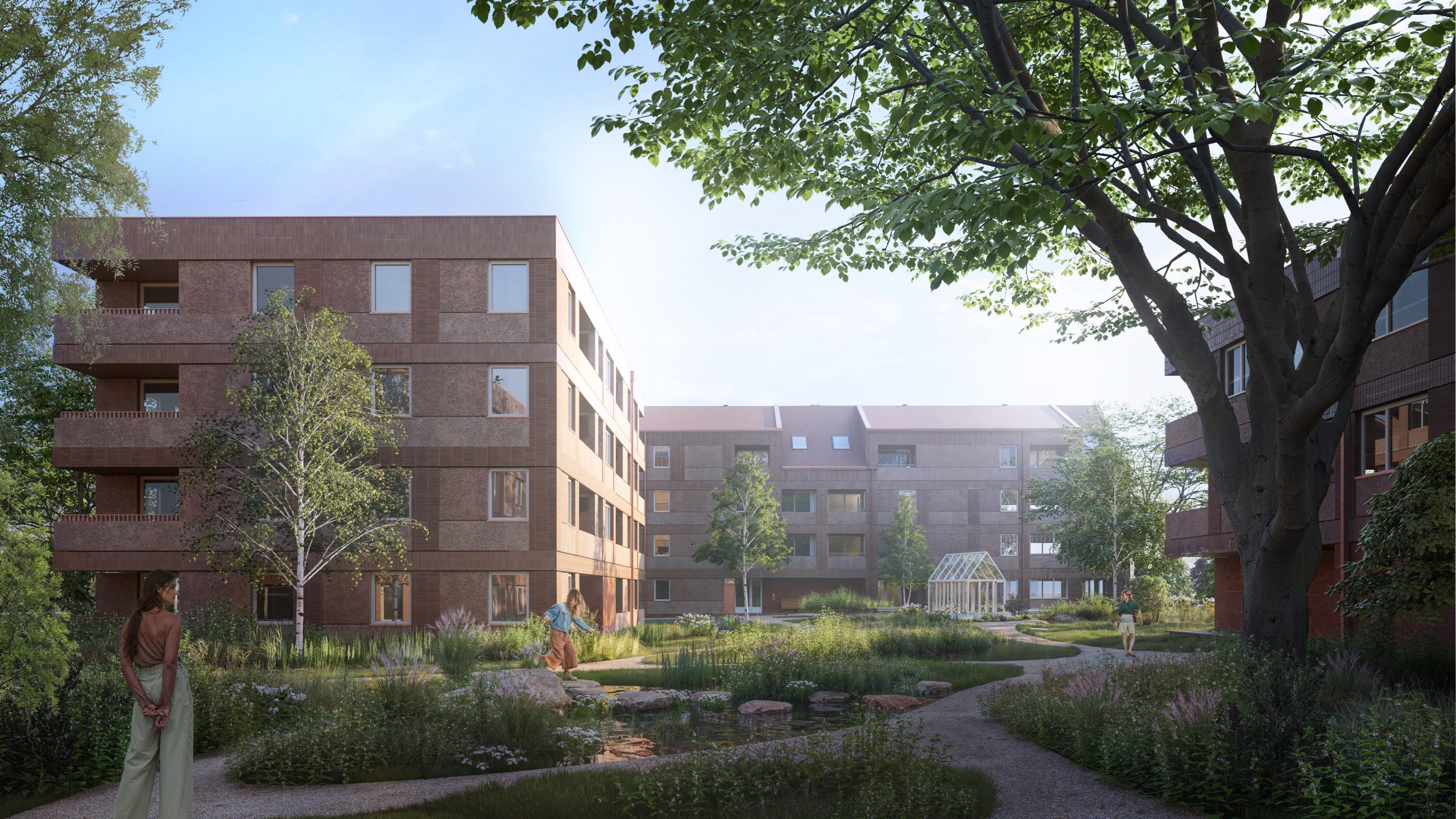



Vehicular traffic has been reduced to a minimum. Parking spaces are located in underground garages, divided in such a way that smoke ventilation systems are not required. On the surface, only access roads and a few parking spaces for guests and services are provided. Sections of roads at critical points are raised to sidewalk level to enforce slower driving and give priority to pedestrians.
The complex was designed based on six repeatable residential modules built using prefabricated reinforced concrete technology. The housing estate meets the assumptions of the A-U Pact for the Climate: the buildings are low-energy and partially powered by renewable energy sources (heat pumps, PV panels). Rainwater is collected in retention tanks and used for irrigation. Rain gardens and flower meadows support water retention and biodiversity.

